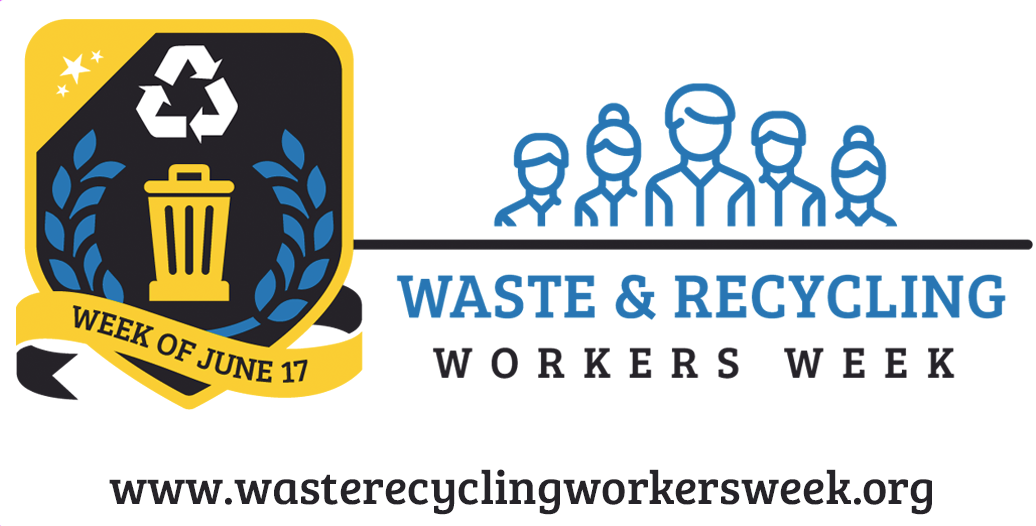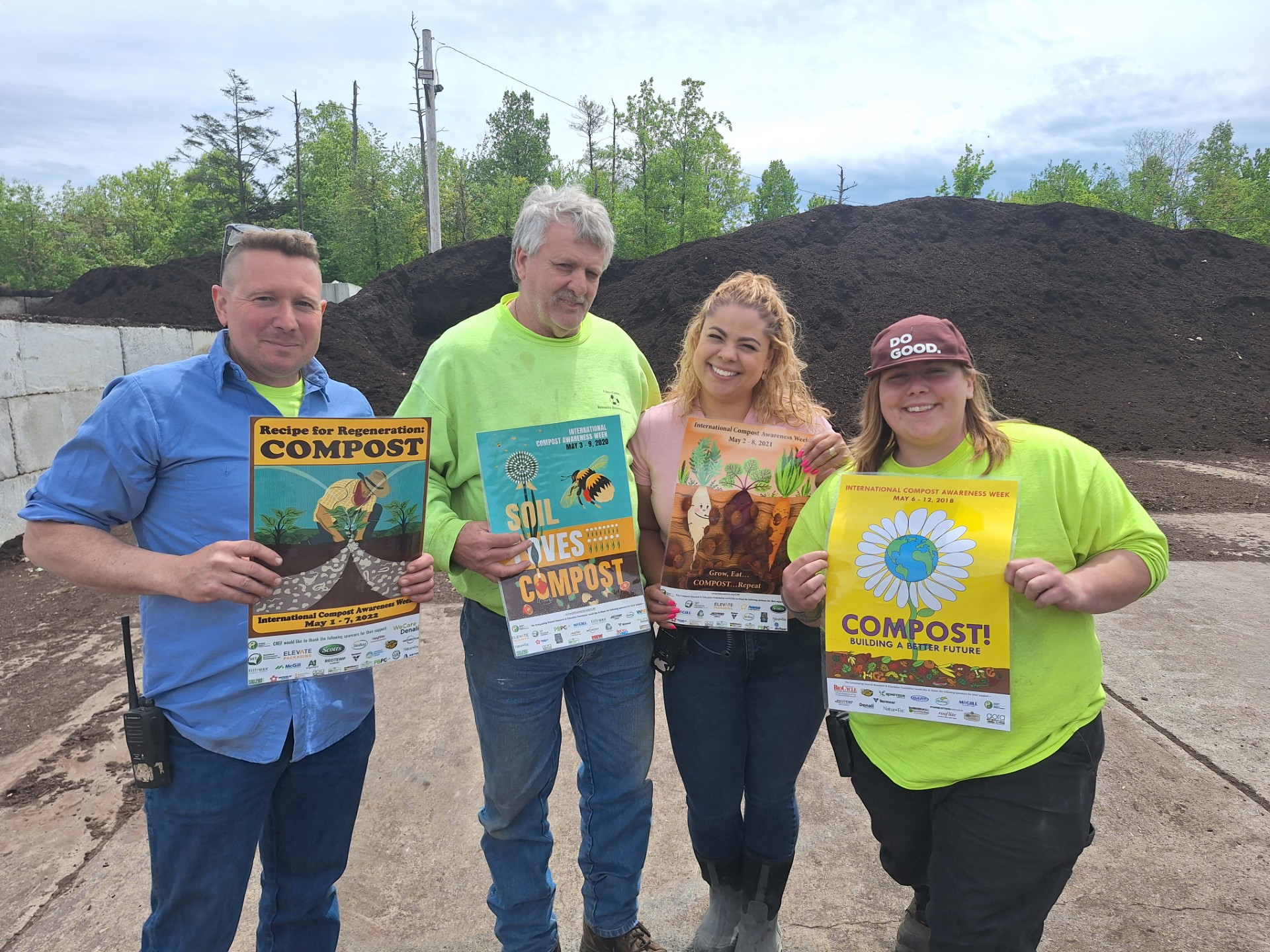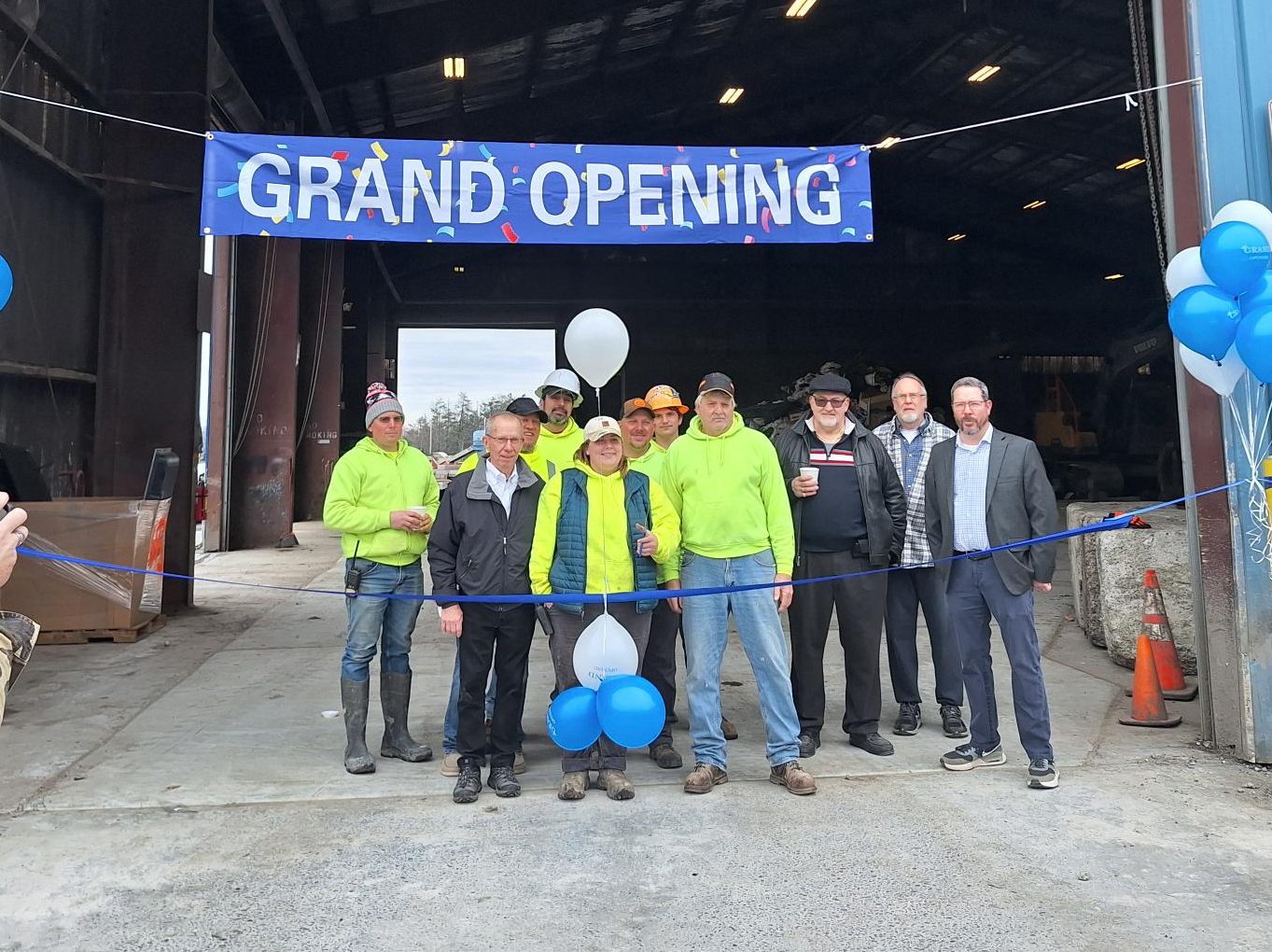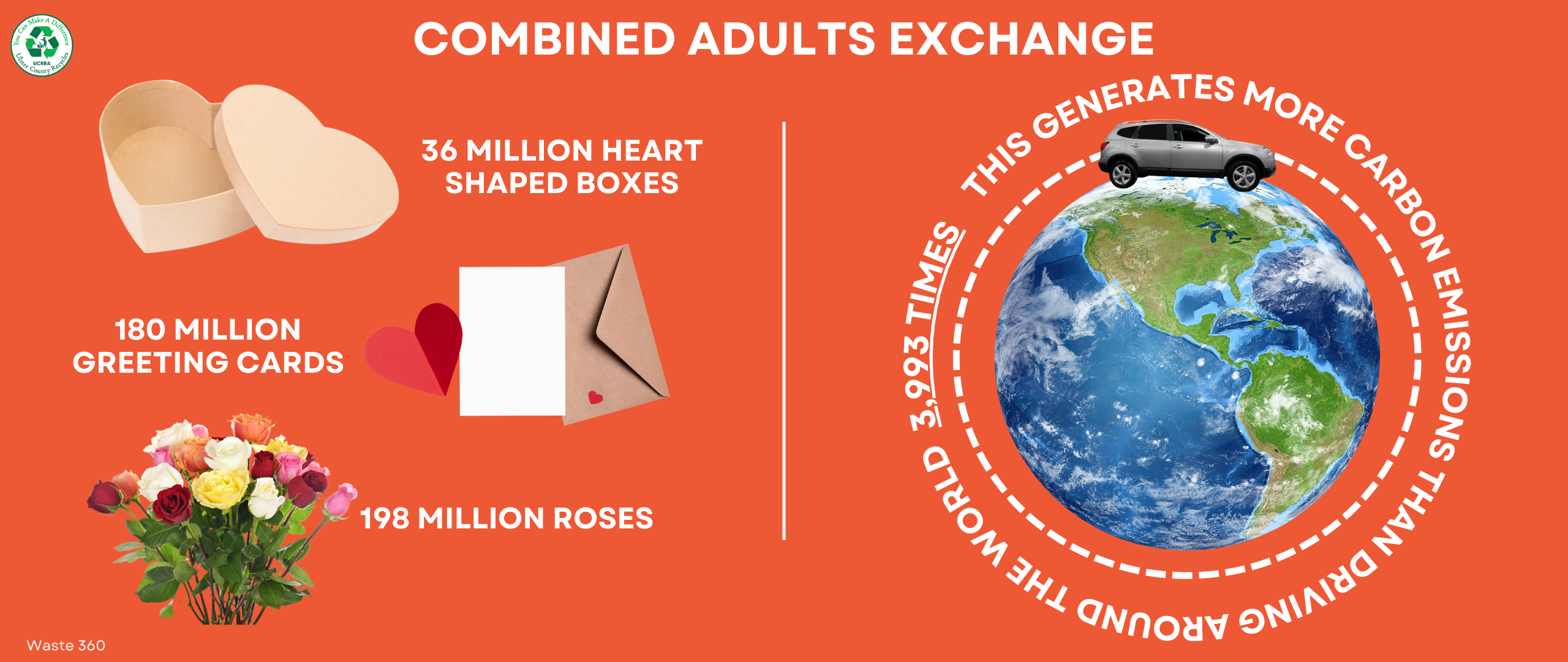
~ June 20th 2024 – Blog by UCRRA Director of Sustainability, Angelina Brandt~
The Week of June 17th is Waste and Recycling Workers Week! Created in 2012 by John D. Arwood, Waste & Recycling Workers Week is a 501(c)(3) nonprofit organization dedicated to lifting up and celebrating the people behind the waste and recycling industry. The Vision of the organization seeks “a world where every [person] in the waste industry is respected and celebrated for the important work they do in service to our communities”.
━
Did you know? It’s estimated that there are 757,000 recycling-related jobs in the United States, and these careers represent $36 billion in wages and $6.7 billion in tax revenue each year (EPA).
Transforming plastic bottles and metal cans back into new packaging and products requires many different types of skilled workers. Class A truck drivers collect recyclables at the curb and transport them to a Recycling Center, where certified weight masters, sorter line workers, plant managers, technicians and maintenance mechanics take on the job of weighing and separating all the types of recyclable materials. Skilled workers are employed in many other support roles in this industry, such as sales and logistics, which are essential for the recycling industry to get these sorted products to the manufacturers who can turn them into new goods. Larger waste and recycling programs may also employ skilled workers in upper management, human resources, customer service, and route logistics dispatch, and many other job titles. Municipalities that manage waste and recycling services may have environmental planners, recycling coordinators, compliance officers, and other types of sustainability professionals on the team. And the construction of new waste and recycling facilities or infrastructure improvement projects often require engineers, project managers, construction laborers, regulatory officers and inspectors, attorneys and many other professional leaders. It’s widely understood that the circular recycling economy typically employs 10x more workers than if you were throw a package or object into the trash.
━

━
During National Waste & Recycling Workers Week, the UCRRA Recycling Outreach Team joins hundreds of industry leaders across the nation who wish to celebrate the incredible workforce that supports the essential public service of materials management. Working in our industry is too often a thankless job, though no one can deny the important benefits to public health and our environment when waste and recyclables are managed correctly! We encourage our community to join us in celebrating the people behind this industry by sharing random acts of appreciation and kindness to everyone in our local waste and recycling work places and spaces. From garbage truck drivers, to school or office janitors, to town transfer station attendants, their impact on keeping Ulster County green and clean is essential!
━
Who are the people behind the Waste & Recycling Industry?
According to DATAUSA, demographic information on refuse & recyclable material collectors (truck drivers) in the US showed that this segment of the workforce is 88.3% male and 11.7% female. The average age in this segment of the workforce is 41.6 years for men and 40.6 years for women. In 2022, 52.4% of the collection workforce were White Americans, and 24% were Black Americans. The collection workforce also demographically is represented as 72% non-Hispanic Americans (2022) and 28% Hispanic Americans (76.1% Mexican, 16.8% Puerto Rican, and 7.08% Salvadoran). According to the U.S. Bureau of Labor Statistics, There are an estimated 6,950 refuse and recycling collection workers in New York State. The mean annual wage for a collection worker in New York is $60,480 which is significantly higher than the national mean of $47,810 or $22.99 per hour.
The 10-year national workforce is projected to grow 2.84%, but collection workers are expected to see a growth of 3.21% over the same period (Bureau of Labor Statistics). This occupation is expected to grow more than the national average. How can we keep up with the growing demand for workers in this industry, promote more diverse and accessibility in the industry, and highlight the benefits of this occupation in environmental conservation? The Solid Waste Association of North America recently approved their 2023-2027 Strategic Plan, Forward Together, and identified their top #3 Goal was to reframe the perception of this industry as an employer of choice. In a 2022 press release, the organization remarked that “Few, if any students, attend university intending to go to work at a landfill, though many young people are used to recycling and express enthusiasm about careers offering involvement in sustainability initiatives. Fewer young people than ever are going into skilled trades, confirmed by industry-wide struggles to fill mechanic, driver, and operator positions. Those are important considerations as employers across North America struggle to fill positions left open by retirement and resignation. SWANA’s goal restates members’ belief that employers across all aspects of resource management offer desirable jobs and opportunities for professional and personal growth.”
━
Solid waste collection is the fifth most dangerous job in America.
Solid waste management facilities and activities can be some of the harshest environments where people and equipment come together. While not every career in the materials management industry is dangerous, and many of them are not dangerous at all, it’s our front-line workers in the industry who face the most risk every day they go to work to collect, transport, or sort our waste and recycling. Examining fatality data from industry sources and media reports, the Solid Waste Association of North America found that almost 70% of the fatalities occurred during collection operations. At least 52 sanitation workers in the United States and Canada died from on-the-job injuries in 2020. These numbers highlight the extreme necessity for a culture of safety and outreach education to raise awareness of worker safety protections in the waste management industry. Despite the challenges, it is possible to create a safe environment for everyone at solid waste facilities or on the road. UCRRA proudly celebrates several consecutive years of operation without workplace injuries. With the support of every Ulster County citizen and visitor, proper sanitation practices can help keep all our communities clean and free of litter, and improves the lives of the sanitation workers serving our businesses and residents every day.
Recycle Right to Protect Sanitation Worker Safety:
- NO TANGLERS: Tanglers are oddly shaped objects that have the potential to tangle around or jam-up equipment, gears, or other machinery at Recycling Centers. Tanglers can be plastic bags, chains, ropes, garden hoses, belts, clothing, etc. and should NEVER be put in your recycling bin. Learn how to properly recycle plastic bags here or visit our Recycleopedia for more guidance.
- NO BATTERIES: The improper disposal of rechargeable batteries leads to injuries, fires, and explosions in solid waste facilities. PLEASE DO NOT put batteries in the recycling bin. The NYS Rechargeable Battery Recycling Act was signed into law December 10, 2010, providing that retailers selling rechargeable batteries are required to post signage in-store advising consumers of the disposal ban and of the opportunity to recycle batteries at their locations. Retail stores that sell rechargeable batteries (Target, Staples, Lowes, Home Depot, Walmart, etc.) should accept rechargeable batteries for recycling. Check with the Customer Service Center at these stores or call ahead to learn about free drop off options.
- NO HAZARDOUS WASTES: Household hazardous waste is any chemical substance or product that is considered toxic, ignitable, flammable, caustic, or otherwise potentially chemically-reactive. Hazardous waste can be anything from an aerosol spray cannister, used motor oil, fluorescent light bulbs, or even house paint. These items never belong in the trash or the recycling bin, but UCRRA offers a FREE safe disposal program for Ulster County residents. Appointments are required to attend any one of our FOUR free events held each year. Learn more about how to safely dispose of household hazardous waste here.
- NO SHARP OBJECTS: Only certain objects and shapes belong in the recycling bin. Please do not put miscellaneous scrap metal objects (like pots/pans, forks/knives, hubcaps, etc.) into your home recycling bin. Broken glass is another common wish-cycled item. Please do not ever put windows, mirrors, or broken dishes in the recycling bin – these objects are made from a completely different mineral chemistry than bottle and jar glass. In addition to broken glass and sharp metal objects, home use medical needles are another huge threat to sanitation workers. Needle-stick injuries pose a danger to sorting line workers at recycling facilities, increasing their exposure to blood borne pathogens. Each year it’s estimated that 45% of all injuries at recycling facilities result from needles that ended up in the recycling stream – or an estimated 2.7 incidents per 100 FTE recycling employees. The (SWANA) asserts that there are concerns needle-stick injuries will increase in the coming years due to factors such as an aging population, home management of increasingly prevalent medical conditions (e.g. diabetes, migraine), confusion surrounding proper disposal, and lack of access to take-back programs. All hospitals and nursing homes in New York State are mandated by law to accept home-use medical sharps as a free community service through their sharps collection programs. We maintain a list of these safe disposal locations, which is accessible on our website Recycleopedia
- RECYCLE BY SHAPE: when in doubt, recycle by shape; bottles, jugs, jars, tubs, cans, and lids can all be recycled. The chasing arrows symbol and the number printed on plastic objects are NOT good indicators that those objects are always accepted in your local recycling program. The recycling industry, nationwide, is transitioning to improve messaging to focus only on the shape of a container, which is a much more effective way of getting consumers to think about what to recycle.
━

━
More Tips to Keep You & Other Workers Safe!
- Keep Your Distance – Garbage trucks are bulky with many blind spots. Please keep 15-30 feet away from a garbage truck at all times. If you have to pass around a garbage truck on the road, do so very slowly and with extreme caution. Make sure no workers are near by, and there is no on-coming traffic.
- Proceed Carefully – When visiting a waste transfer station, follow all safety practices, obey site signage and instructions by the staff. When it comes to site safety, your #1 tool should always be awareness of your surroundings and using caution whenever driving or walking around a waste transfer station.
- “See and Be Seen” – Always engage eye contact with drivers and equipment operators to ensure they are oriented to where you are driving or walking around them. High visibility is crucial to safely drive or walk around heavy equipment or solid waste collection vehicles.
━
━
UCRRA recognizes the dedication and hard work required to manage our waste effectively and safely. A job in the solid waste and resource management field can provide an extremely fulfilling and rewarding career. We celebrate and appreciate these essential workers, and their families, who support our mission in service of Ulster County, every day of the year, and we thank you for all you do to keep Ulster County a beautiful and healthy place to live.
If you enjoyed this blog please consider sharing it to help spread the word about National Waste & Recycling Workers Week!
━


